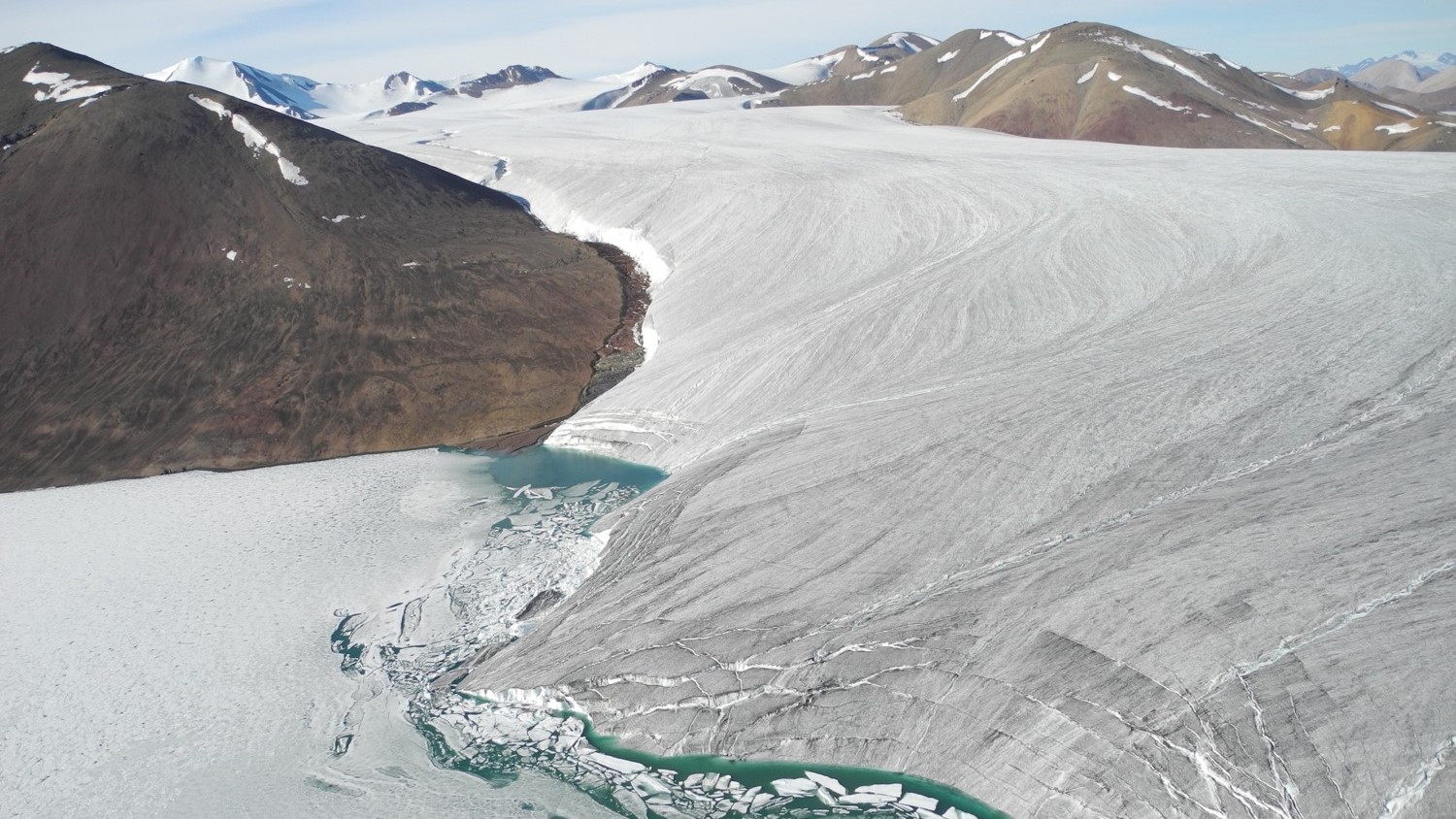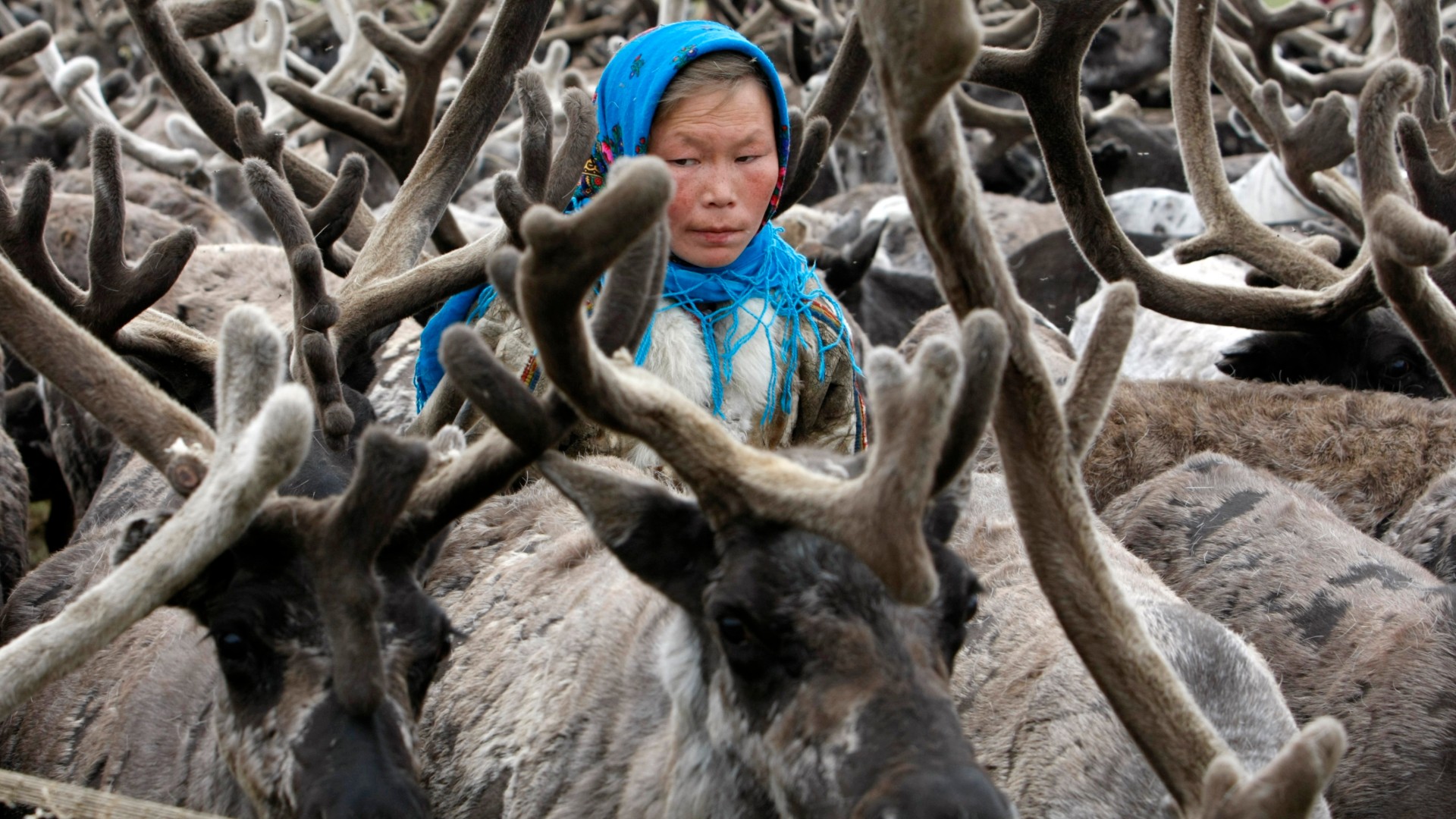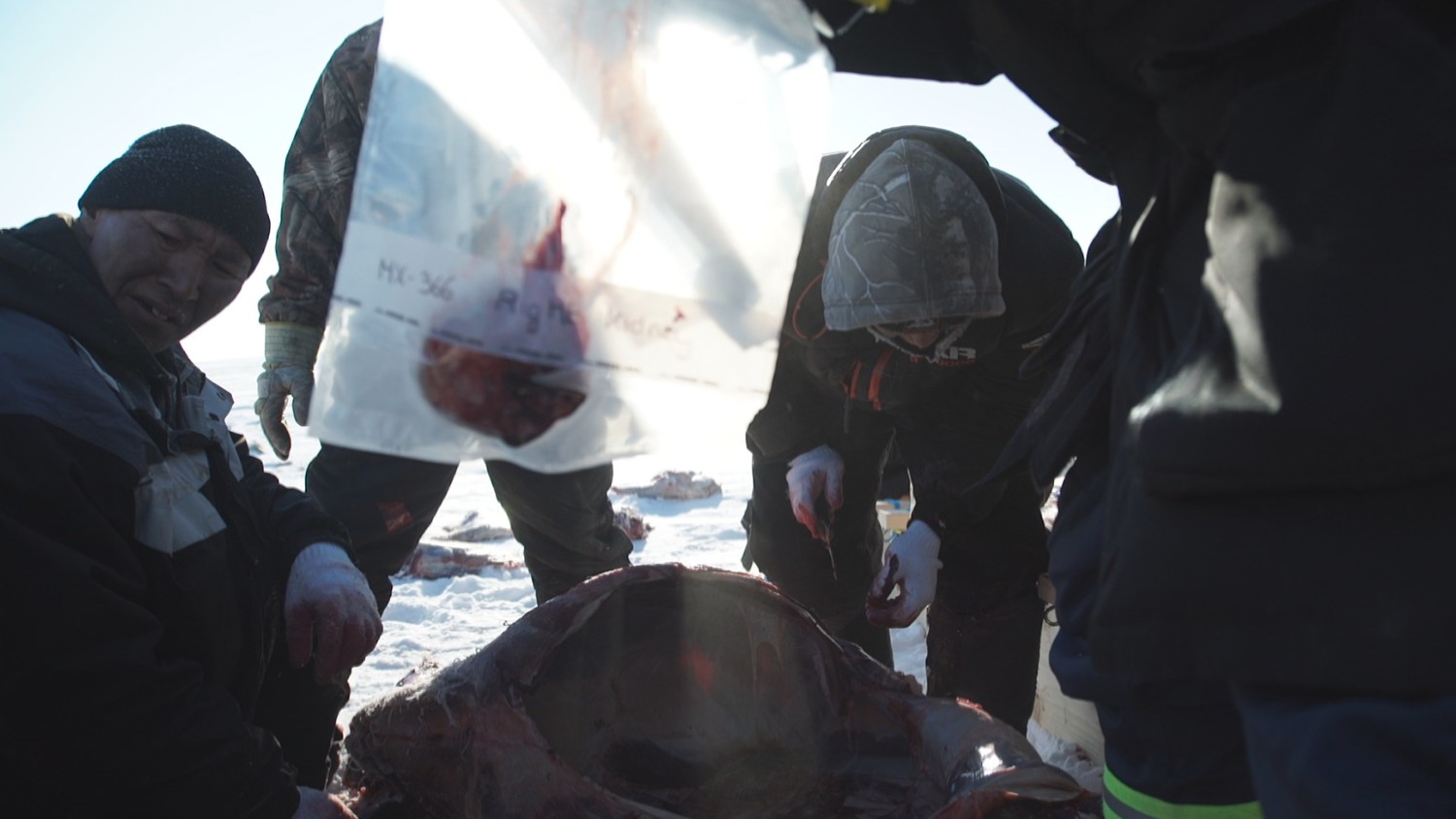Scientists warn of Arctic microbial threats induced by climate change

Climate change in the Arctic is not only melting permafrost, transforming landscapes, wreaking havoc with northern infrastructure, releasing greenhouse gases but could also unleash potentially harmful microorganisms and pathogens that have laid dormant in the frozen cryosphere for millennia, scientist warn.
Moreover, climate change makes it possible for pathogens that were once present only in the south to rapidly move north.
These new threats were the subject of a recent scientific conference organized by the U.S. and European academies of science in Germany on Nov. 6 and 7.
The conference in Hannover entitled “Understanding and Responding to Global Health Security Risks from Microbial Threats in the Arctic” brought together 55 experts in global health, wildlife disease and northern ecology from all eight Arctic nations, including Canada.
Dangers lurking in thawing permafrost?

The conference was co-sponsored by the U.S. State Department as part of the United States’ contribution to an Arctic Council project called One Arctic, One Health, said Joshua Glasser, a Foreign Affairs Officer with the Bureau of Oceans and International Environmental and Scientific Affairs at the State Department.
“We know that permafrost is thawing and there is more contact with people and thawing permafrost either directly due to their hunting or other activities on the land, or due to research activities they may be doing, or indirectly through other wild animals,” Glasser said. “And we know that permafrost contains a variety of viruses and bacteria.”
However, scientists also know that not all viruses and bacteria are actively harmful or pathogenic to animals and humans, and it’s important to be able to distinguish the harmful pathogens from the wider microbiome of the Arctic environment, Glasser added.
“So this conference was an attempt to look at all the science that is known so far, identify what in that pathogenic category we need to be worried about, which are the broader microbiome, and also what are the broader research and development, scientific and technology needs we need to get to the bottom of key questions that are, frankly, still unknown,” Glasser said.
‘Unknowns associated with climate change’

Warwick F. Vincent, Canada Research Chair and professor at the Department of Biology and the Centre for Northern Studies (CEN) at Laval University in Quebec City, said one of the most notable examples of such harmful pathogens is anthrax.
In the warm summer of 2016, anthrax bacteria and spores likely released by the thawing of an old burial site of reindeer carcasses infected and killed around 2,600 reindeer on the Yamal Peninsula in the Russian Arctic, said Vincent, who was one of the Canadian participants of the conference.
The outbreak also infected 36 Russian reindeer herders, he said.
Other disease-causing bacteria and viruses have been identified in the rapidly melting ancient Arctic soils and ice, Vincent said.
“It’s just another example of how there are so many unknowns associated with climate change,” Vincent said. “We know that we’re on the brink of huge changes in the North and this is yet one more process that we should be looking at very closely.”
Surveillance of wildlife health

Arctic warming is also affecting the health and nutrition of northern animals and weakening their resistance to disease, Vincent said.
New pathogens are entering the Arctic via animals moving northwards, and migratory species such as Arctic birds and insects have the capacity to genetically exchange and transmit disease over large distances, he said.
Susan Kutz, a wildlife veterinarian and professor at the University of Calgary Faculty of Veterinary Medicine in Alberta, said it is critically important to be able to properly monitor these changes.
Kutz, whose research focuses on understanding the impacts of climate change on disease in Arctic wildlife and how that affects northern communities, has worked in the North since the late 1980s.
Kutz’s presentation at the conference focused on doing wildlife health surveillance in the Arctic.
“What’s relevant for this meeting was, if we see unusual or pathogenic bugs thawing out of the permafrost or ice, one of the first indicators might actually be wildlife and wildlife health changing,” Kutz said.
“Since wildlife are spread across the landscape, they’re grazing in areas where there is permafrost thaw, they may be the indicator species for what’s going on out there and the early warning before anything really affects people.”

Also because many northern and Indigenous communities rely on wildlife as an important source of food, they could be exposed to these microbes and pathogens through their handling of wildlife, Kutz said.
“Anthrax exists in Canada, it’s common in livestock, we see it quite commonly in wood bison in Wood Buffalo National Park and Mackenzie Bison Sanctuary in the Northwest Territories,” Kutz said.
But while the anthrax outbreak in northern Siberia was attributed to thawing permafrost, it’s much more likely related to the lack of vaccination of domestic reindeer herds in post-Soviet Russia, Kutz said.
“Anthrax is a very interesting one because it’s a very hardy bacteria, when it’s free in the environment it forms a spore and we know it could last 40, 50, 60 years,” Kutz said.
There are other pathogens in the Arctic that can affect animals and people, she added.
“Whether any of those are sitting in the permafrost is another story,” Kutz said.
Using Indigenous knowledge as first line of detection

Northern Indigenous hunters are the first line of detection of any abnormalities in wildlife, Kutz said.
“These people are out on the land all the time, they know what the animals do and what they should look like,” Kutz said. “Our first line of defence of finding something abnormal is usually through hunter-based surveillance where there is a good communication line and sample transporting line.”
Kutz and her research group have distributed standardized sampling kits and questionnaires through various programs they work with in northern and Indigenous communities.
“From that sampling kit we test for a few key pathogens – we’re testing caribou and muskoxen – one of the key ones we test for is brucellosis, which we know is in the caribou, we know it’s more and more common in muskoxen and it can infect people,” Kutz said.
“We test for bacteria called erysipelothrix rhusiopathiae, which was the cause of a large, widespread mortality of muskoxen on Victoria and Banks islands several years ago and it’s still circulating in the Arctic.”
Within the sample kits that Kutz and her fellow researchers have distributed to Indigenous hunters throughout the Canadian Arctic are bags labelled as “Abnormal Stuff,” she said.
“That’s where quite often people see something that just doesn’t look right and throw that in the bag and that’s where sometimes we find new stuff,” Kutz said.

There is a huge need to ensure that people in the Arctic get the appropriate training on how to handle something unusual, she said.
Kutz said her group provides on the ground training to hunters about what to look for and what to sample and how to sample it.
“The level of risk there is much lower than if you go out on the tundra and find 10 dead caribou,” Kutz said. “That’s a sort of situation when you go, ‘Why did 10 caribou die at once?’ That’s something that makes you worry about anthrax. Certainly if it’s anything disease related, you know that the pathogens will be going to be circulating throughout the bodies of those animals and all of it should be considered a biohazard.”
In such cases, one of the big needs is to have people trained in proper biosafety, sampling, data recording technics, Kutz said.
“We can’t do anything from the perspective of detecting new things in the Arctic if we don’t have a front line of actually detecting unusual things and getting samples,” she said.
It’s a detection system that needs to be created from the scratch, Kutz said.
“People will do the best they can,” Kutz said. “But really the front line is not necessarily as well-trained and as well-staffed as it needs to be to be accurate.”
One of the examples she talked about during her presentation in Germany was the fact the Canadian researchers missed a major die-off of muskoxen in Cambridge Bay, on Victoria Island in Nunavut, in 2011-14, Kutz said.
Pathogens transported by migrating birds and shipping traffic

Terrestrial animals are not the only source of propagation of potentially dangerous microorganisms.
“There are hundreds of thousands of geese that are migrating from the Arctic down to the southern states and across the Bering Strait,” Kutz said. “They certainly serve as a potential corridor for moving some pathogens that would be, generalist pathogens that can infect more than one species. That’s very real.”
A 2009 study done in Svalbard showed geese were transporting Toxoplasma from the U.K. to the Norwegian Arctic archipelago and infecting Arctic foxes there, Kutz said.
Shipping traffic and increased tourism to the Arctic presents another possible corridor for introducing pathogens to the region, she said.
“What used to be an isolated Arctic is not so much anymore,” Kutz said.
Arctic resource gap

The conference highlighted a major gap in resources to monitor the various biohazards in the Arctic, Kutz said.
“We’ve got fabulous labs in the south, we’ve got people who are brilliant and can take each one of these pathogens at a molecular level, sequence it and do a million things to understand what makes it virulent,” Kutz said.
“But if we don’t have the infrastructure, the training, the resources put into the people and communities in the north, we’re not going to detect it, we’re not going to get things to a lab, we’re not going to have good quality data and things will run a long-long course before we even know anything is going on.”
However, by focusing on emerging threats coming from the thawing cryosphere researchers and policy-makers risk missing an important point, she said.
“Because, while there might be something happening there, we know already a lot of emerging pathogens that are making their way from the south to the north, we know that existing ones are changing their dynamics already,” Kutz said. “All of the infrastructure we need to deal with stuff coming out of permafrost is the same stuff we need to deal with existing and invasive pathogens.”
There are plenty of concrete examples of pathogens moving north because of climate change, she added.
“We’ve got lungworms that used to be restricted to the mainland, they have made their way to the northern Victoria Island, we’ve got ticks that used to be restricted to Alberta that are now well up into the Northwest Territories and Yukon and crossing the Arctic Circle, we’ve got observations by hunters of disease syndromes in animals that are consistent with vector-borne parasites,” Kutz said. “All of that is real, it’s happening, it’s affecting the health of animals.”
Related stories from around the North:
Canada: Arctic sea ice loss linked to spread of deadly virus in marine mammals, Eye on the Arctic
Finland: Finland’s endangered Saimaa ringed seal population reaches 400, Yle News
Greenland: Oldest Arctic sea ice vanishes twice as fast as rest of region, study shows, Eye on the Arctic
Norway: In Arctic Norway, seabirds build nests out of plastic waste, The Independent Barents Observer
Russia: Russian Arctic town overrun by polar bears, CBC News
Sweden: Warnings in Sweden about dangerous bacteria in Baltic Sea, Radio Sweden
United States: Heat stress that caused Alaska salmon deaths a sign of things to come, scientist warns, CBC News



